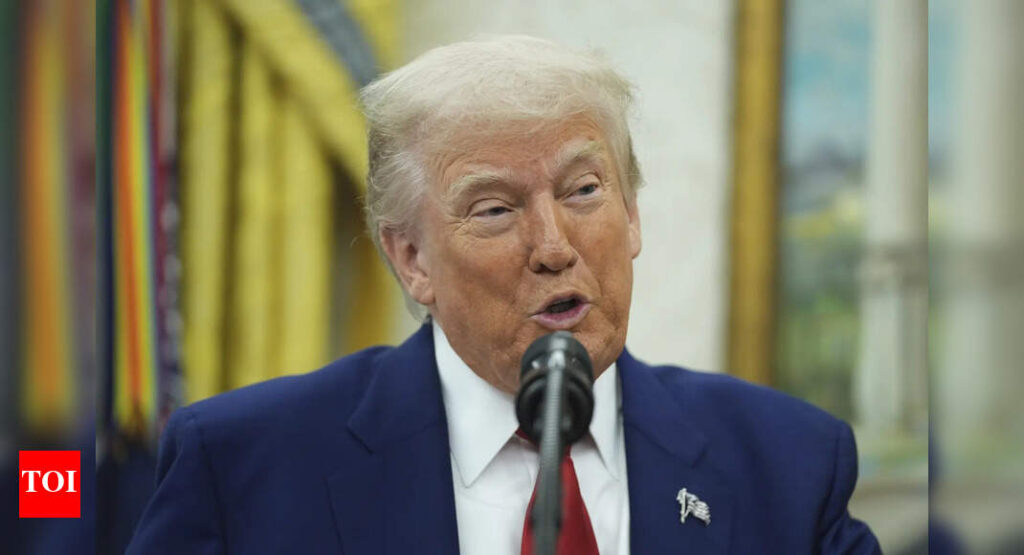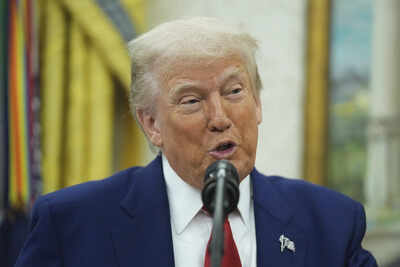Day after being struck down, US appeals court allows Trump tariffs to ‘temporarily’ stay in effect

US President Donald Trump has been temporarily allowed to keep enforcing tariffs under emergency powers, just a day after a federal court ruled he had overstepped his authority by trying to impose sweeping tariffs on foreign goods.In a strongly-worded decision on Wednesday, the US court of international trade said that Trump unlawfully invoked emergency powers under the 1977 International Emergency Economic Powers Act (IEEPA) to declare a national emergency and slap tariffs on imports from nearly every country in the world.The ruling is a major blow to Trump, whose turbulent trade policies rattled global markets, triggered supply chain chaos, and sparked concerns about inflation and sluggish growth. However, the legal fight is far from over, as the US court of appeals for the federal circuit allowed the president to continue collecting tariffs under IEEPA, at least temporarily, while he appeals the trade court’s ruling.The Trump administration also has other tools to lure factories back to America, raising funds for the US treasury.Trump’s tariff policies are challenged in at least seven lawsuits. The court’s ruling stems from two combined cases: one from a group of five small businesses, and another from 12 U.S. states.“The reason that he chose IEEPA was he thought he could do this unilaterally without much oversight by Congress,” said Jeffrey Schwab, senior counsel at the Liberty Justice Center, who represented the small businesses. “The court saw through that.”In its decision, the trade court pointed out that America has run trade deficits for nearly 50 years, hardly an urgent or unforeseen crisis.Another judge, US district Judge Rudolph Contreras, also issued a narrower ruling on Thursday blocking tariffs applied to two Illinois-based educational toy companies, further complicating the president’s strategy.The original IEEPA tariffs, introduced on what Trump dubbed “Liberation Day” — April 2 — included up to 50% duties on countries with trade surpluses against the U.S., and a 10% baseline tariff for most others. Though Trump paused the steeper levies for 90 days to allow time for negotiation, he kept the lower ones in place.MarketsFinancial markets reacted with caution. Stocks saw modest gains on Thursday, with analysts suggesting investors expect the White House to find another way to push its trade plans forward.“Investors are not getting too carried away, presumably in the expectation that the White House will find a workaround that allows them to continue to pursue their trade agenda,’’ said Matthew Ryan, head of market strategy at Ebury.What if tariffs are lifted permanently ?Even if the IEEPA tariffs are ultimately struck down, Trump’s broader tariff regime remains. Levies on Chinese imports, introduced during his first term and maintained by President Joe Biden, are still in place. These were part of a broader confrontation over China’s alleged unfair subsidies, forced technology transfers and cybertheft.Analysts at Capital Economics said if the IEEPA tariffs are permanently lifted, US growth could rebound in late 2025. They project the economy would grow at a 2% annual rate, up from their earlier 1.5% forecast, with inflationary pressures also easing.Importers may also benefit. “If the trade court’s decision is upheld, importers should eventually be able to get a refund of (IEEPA) tariffs paid to date,” wrote Peter Harrell of the Carnegie Endowment on X. “But the government will probably seek to avoid paying refunds until appeals are exhausted.”







